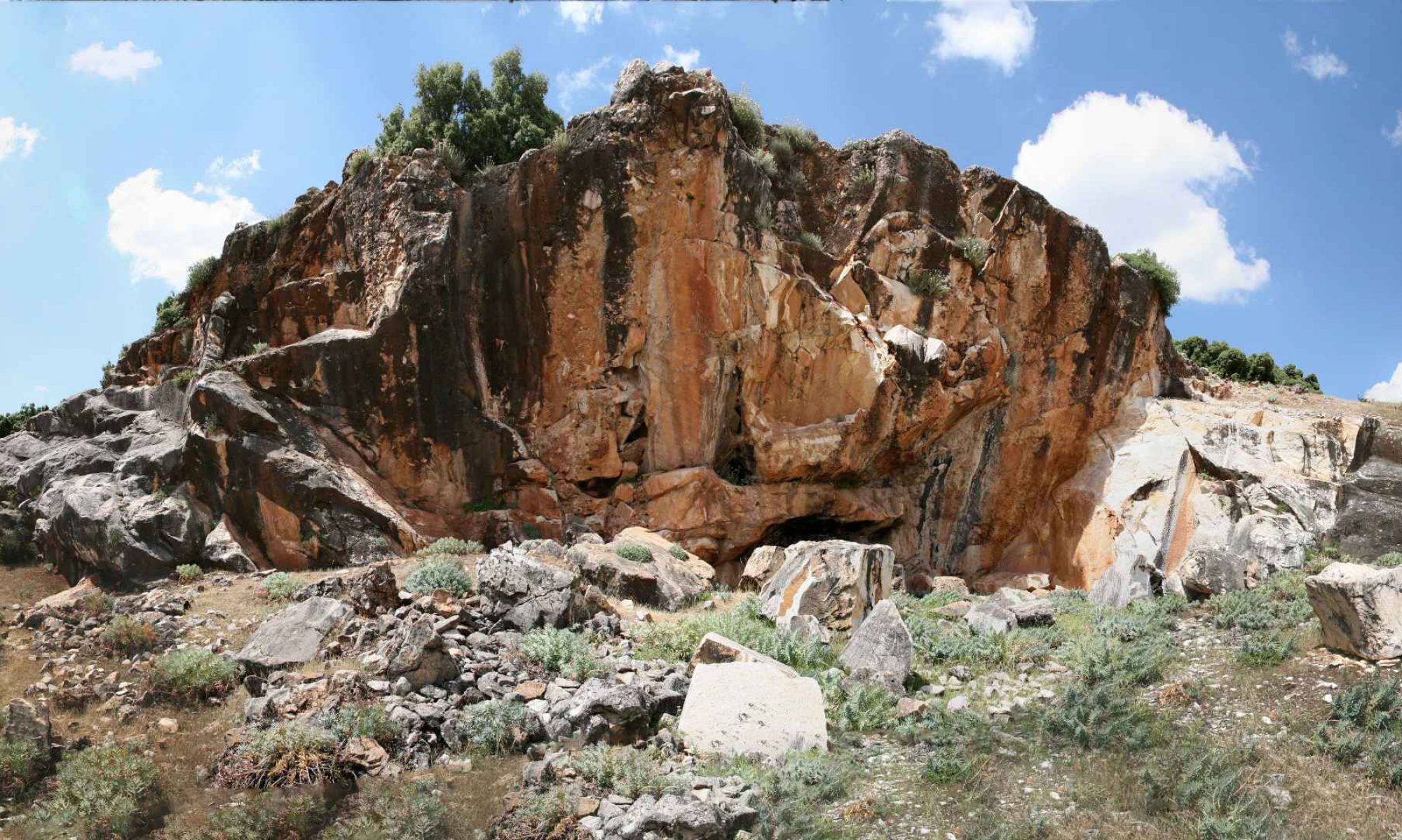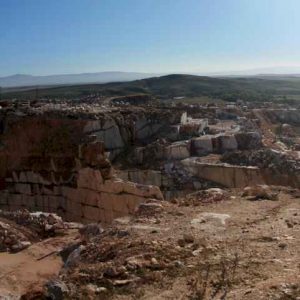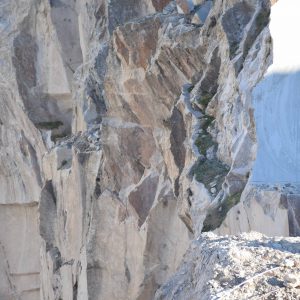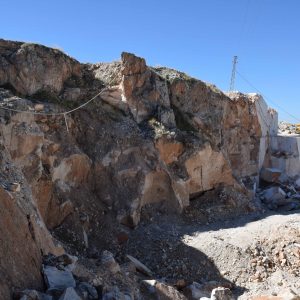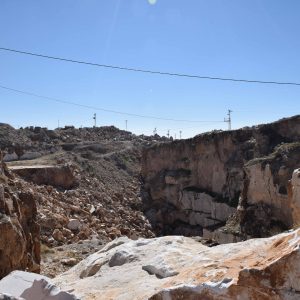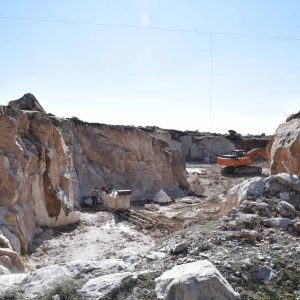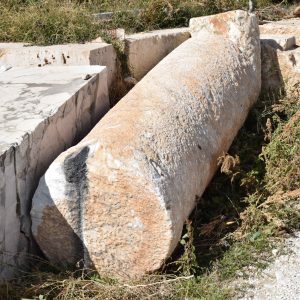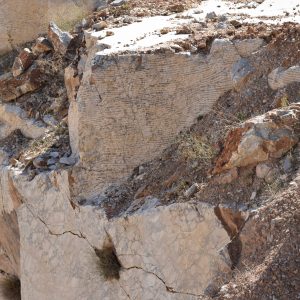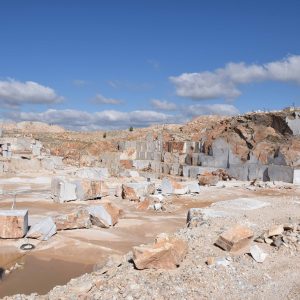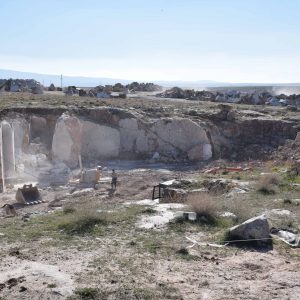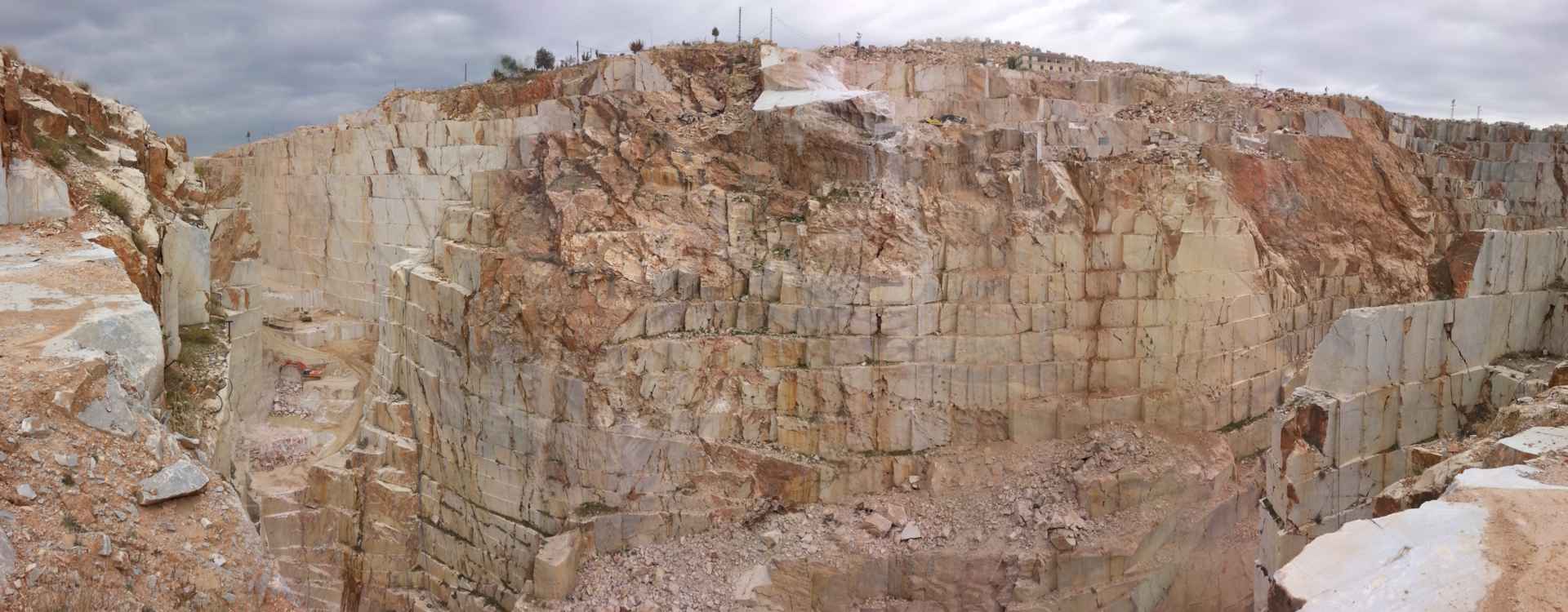
The quarries of Dokimeion are located in Phrygia, 25 km northeast of Afyon and about 2.2 km southeast of the modern city of İscehisar (possibly ancient Dokimeion).
Modern scholars’ interest in Dokimeion began in the 19th century with William Ramsay (1882), who was followed by Otto Hirschfeld (1905) and Charles Dubois (1908). Because of the the abundant inscriptions found at the site, modern scholarship has focused on the administrative organisation of the quarries and study of quarry labels, mainly by Clayton Fant (1989), Michel Christol (1986; 1987, 1991), Thomas Drew-Bear (1994), Alfred Hirt (2010), Patrizio Pensabene (2010) and others.
Important studies on Dokimeian workshops were conducted by Marc Waelkens (1982).
The quarries of Dokimeion were the most important source for fine-grained white and polychrome breccia marbles (pavonazzetto) in Asia Minor (Monna and Pensabene 1977) and became one of the largest exporting quarries of the Roman world. That the Dokimeion quarries were active mainly in the Roman Imperial period is an opinion commonly repeated in scholarship, although Strabo (12. 8. 14) reports the Romans found the quarries already in operation and that their contribution was a change of scale for the enterprise.
Vast epigraphic material, comprising over 450 notae lapicidinarum (from the reign of Domitian(?)/Trajan, to Maximinus Thrax) engraved on semi-worked blocks and column shafts and other epigraphic material (such as quarry wall dipinti, see Bruno 2017) found both within the quarries themselves as well as the marble stockyards in Rome and Ostia, illustrates the system of organisation and administration of the quarries (see Fant 1989; Hirt 2010).
The most accurate survey of the quarries up till now has been carried out by Josef Röder (1971). Even today the scholars still use Röder’s topographic plans, which unfortunately, are no longer up to date due to extensive modern exploitation. The situation that Marmora Asiatica team encountered in 2014 has changed drastically from Röder’s survey. Most of the ancient quarries he documented nearly fifty years ago no longer exist, having been obliterated by modern intensive marble quarrying that began on a large scale after Röder’s time.
Röder divided the Dokimeion quarries into two main groups according to epigraphic evidence:
The first group consists of the so-called Latin quarries, exploited in Roman Imperial times. Röder divided them into five sectors, marked on his map with Latin numbers from I to V. The most important and renowned are the quarries of the well-known Bacakale area.
The second group is composed of the so-called Greek quarries exploited in Byzantine times, labelled on Röder’s map with letters from A to H, that have never been studied systematically from an archaeometric point of view. As a matter of fact, the modern scholarship focused mainly on geochemical analyses of stable carbon and oxygen isotope ratios (Attanasio et al. 2006), on the electroparamagnetic resonance spectroscopy –EPR– (Attanasio 2003), and only into very limited extend on minero-petrographic (e.g. Antonelli et al. 2015) and strontium ratio studies (e.g. Brilli et al. 2005), exclusively at the Bacakale quarries. Because of Marmora Asiatica’s discovery of new quarries nearby, our research is important in that it has enlarged the petrographic and geochemical database. Indeed, in 2014, ten more marble quarries, in addition to those recorded by Josef Röder, were found and documented; all new quarries are located in the Bahçecik area (cluster 4). In total eighteen ancient quarries, of which five were scanned, were documented in vast area of Dokimeion, which we, for organizational purposes divided into four clusters. Most of the ancient quarries, however, disappeared forever under the modern-age exploitation.
References
- Antonelli, F., Lazzarini, L., 2015: ‘An updated petrographic and isotopic reference database for white marbles used in antiquity’. Rendiconti Lincei. Scienze Fisiche e Naturali 26(4), 399–413.
- Attanasio D., 2003: Ancient White Marbles. Analysis and Identification by Paramagnetic Resonance Spectroscopy. Rome: L’Erma di Bretschneider.
- Attanasio, D., Brilli, M., Ogle N., 2006: The Isotopic Signatures of Classical Marbles. Rome: L’Erma di Bretschneider.
- Brilli, M., Cavazzini, G., Turi, B., 2005: New data of 87Sr/86Sr ratio in classical marble: an initial database for marble provenance determination. Journal of Archaeological Science 32, 1543–1551.
- Bruno, M., 2017: ‘Tituli picti su due fronti di cava nel distretto di Bacakale a Docimium (Iscehisar, Afyonkarahisar)’. Journal of Roman Archaeology 30, 469–489.
- Christol, M., Drew-Bear, Th., 1986: ‘Documents latins de Phrygie’. Tyche 1, 4–87.
- —- 1987: ‘Inscriptions de Dokimeion’, in B. Rémy (ed.), Anatolia Antiqua/Eski Anadolu. Istanbul–Paris: Éditions Divit, 83–137.
- —– 1991: ‘Les carrières de Dokimion à l’époque sévérienne’, Epigraphica 53: 113–174.
- Drew-Bear, Th. 1994: ‘Nouvelles inscriptions de Dokimeion’. Mélanges d’Archéologie et d’Histoire de l’École française de Rome 106, 747–844.
- Dubois, Ch., 1908: Étude sur l’administration et exploitation des carrières de marbre, porphyre, granit etc. dans le monde romaine. Paris: Fontemoing.
- Fant, J.C., 1989: Cavum antrum Phrygiae. The Organization and Operations of the Roman Imperial Marble Quarries in Phrygia. BAR International series 482. Oxford: Archaeopress.
- Hirschfeld, O., 1905: Die kaiserlichen Verwaltungsbeamten bis auf Diokletian. Berlin: Weidmannsche Buchhandlung.
- Hirt, A.M., 2010: Imperial Mines and Quarries in the Roman World: Organizational Aspects, 27 BC–AD 235. Oxford: OUP.
- Lazzarini, L., 2011: ‘Controreplica alla replica della mia recensione’. Marmora 7, 123–124.
- Monna, D., Pensabene, P., 1977: Marmi dell’Asia Minore. Rome: Consiglio Nazionale delle Ricerche.
- Pensabene P., 2010: ‘Cave di marmo bianco e pavonazzetto in Frigia. Sulla produzione e sui dati epigrafici’. Marmora 6, 71–134.
- Ramsay, W.M., 1882: ‘Inscriptions inédites de marbres phrygiens’. Mélanges de l’école française de Rome 2, 290–301.
- Röder, J., 1971: ‘Marmor Phrygium. Die antike Marmorbrüche von İscehısar in Westanatolien’. Jahrbuch des Deutschen Archäologischen Instituts 86, 253–312.
- Waelkens, M., 1982: Dokimeion. Die Werkstatt der repräsentativen kleinasiatischen Sarkophage. Chronologie und Typologie ihrer Produktion (Archäologische Forschungen 11). Berlin.
